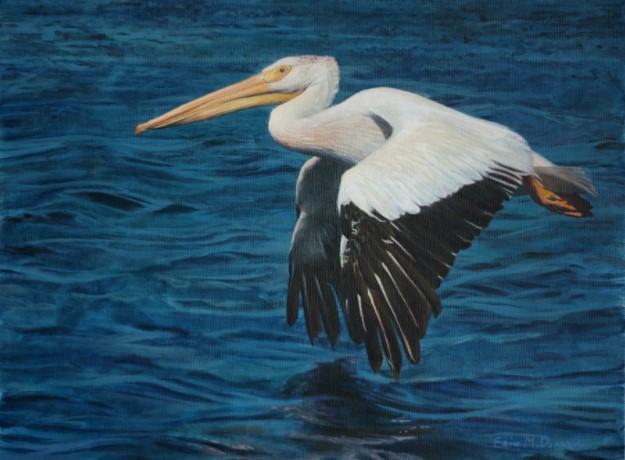1: My Current Attempts
Erin McDonnell
American White Pelican, 2016
Acrylic on canvas, w14" cm x h11"
From original photo by Ingrid Taylor, used under Creative Commons license
So soul-baring time. Above is my most recent attempt at an animal painting, of an American White Pelican (created as a gift). Though not a professional-level picture (I'm working on that part), the above is a good enough representation that I can't hide behind the photo as an excuse.
My primary methods of working paint are scumbling and wet-into-wet: both require the use of opaque paint. What I like about this: primarily that it makes things feel solid, it puts the emphasis on shape and line more than texture, and I actually even like the flatness that comes by default when using acrylic.
Detail shot. Click to enlarge.
Downside: as Kitler talks about in his video and as I mentioned yesterday, opaque paint (rather than thin glazes of transparent color) really limits how bright and interesting your colors can be...especially when you work with acrylic, which shifts darker as it dries anyway. I started looking into Kitler for a model on how to polish my colors up in acrylic, but again, the trick is how to get the glow-y depth he gets without locking into his methods entirely.
One possible solution: might try a two-step to completing a painting, creating one version in the way I normally work, then transferring the original underdrawing to a new surface, and then using the first painting as a model to guide the second. That may let me keep the swinging spontaneous lines I created in the first painting as I progress in the second; otherwise, you're kind of guaranteed to lose them. Whether they got lost anyway remains to be seen.


